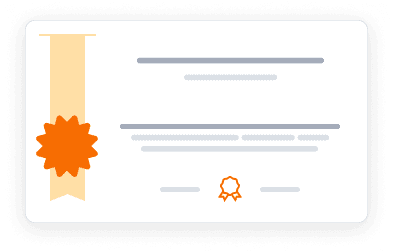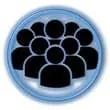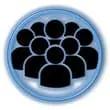Learn how science and technology enhance disaster resilience and support sustainable development goals.
Learn how science and technology enhance disaster resilience and support sustainable development goals.
Explore the cutting-edge intersection of technology and disaster risk reduction in this comprehensive course. Discover how emerging technologies are revolutionizing our approach to natural hazards like floods, landslides, and earthquakes. This course provides a global perspective on disaster management, examining case studies from both developed and developing nations. You'll learn about advanced risk assessment tools, early warning systems, and innovative response strategies. The curriculum covers the entire disaster management cycle, from prevention and preparedness to response and recovery. By the end, you'll understand how science and technology contribute to building resilient communities and achieving sustainable development goals. Perfect for professionals and students in engineering, environmental sciences, or related fields looking to enhance their expertise in disaster risk reduction.
8,217 already enrolled
Instructors:
English
English, Français
What you'll learn
Explain key concepts in Disaster Risk Reduction (DRR) and related technologies
Identify and describe existing and emerging technologies for landslide and flood reduction
Apply methodological tools to assess vulnerabilities and strengthen community resilience
Analyze the role of technological innovations in DRR across different global contexts
Evaluate the effectiveness of early warning systems and preparedness technologies
Understand the application of robotics and ICT in disaster response scenarios
Skills you'll gain
This course includes:
PreRecorded video
Graded assignments, exams
Access on Mobile, Tablet, Desktop
Limited Access access
Shareable certificate
Closed caption
Get a Completion Certificate
Share your certificate with prospective employers and your professional network on LinkedIn.
Created by
Provided by

Top companies offer this course to their employees
Top companies provide this course to enhance their employees' skills, ensuring they excel in handling complex projects and drive organizational success.





There are 7 modules in this course
This course provides a comprehensive overview of science and technology applications in disaster risk reduction (DRR) and sustainable development. Structured over seven chapters, it covers the entire cycle of disaster management: 1) Introduction to DRR concepts and technologies; 2) Risk assessment tools and methodologies; 3) Prevention and mitigation strategies, including structural and non-structural measures; 4) Early warning systems and preparedness technologies; 5) Disaster response and emergency relief innovations, including robotics and ICT; 6) Post-disaster recovery and reconstruction technologies; 7) Resilience building and sustainable development through science and technology. The course emphasizes the interdisciplinary nature of DRR, exploring how technological innovations can be adapted to different contexts in both developed and developing countries. Case studies from various nations, including Switzerland, Nepal, Colombia, and the Philippines, provide practical insights into the application and challenges of these technologies. By the end of the course, participants will have a holistic understanding of how science and technology contribute to reducing disaster risks and enhancing community resilience.
Introduction to Disaster Risk Reduction and Science and Technology for DRR
Module 1
Science and Technology for Risk Assessment
Module 2
Science and Technology for Prevention
Module 3
Science and Technology for Early-Warning and Preparedness
Module 4
Science and Technology for Disaster Response and Emergency Relief
Module 5
Science and Technology for Post-Disaster Recovery and Reconstruction
Module 6
Science and Technology for Resilience and Sustainable Development
Module 7
Fee Structure
Instructors

1 Course
Expert in International Development and Environmental Science
Silvia Hostettler is Deputy Director of the Cooperation & Development Center (CODEV) at EPFL, where she coordinates research activities and directs the UNESCO Chair's Biennial International Conference in Technologies for Development. After studying Tropical Environmental Science at the University of Aberdeen and completing development studies at EPFL, she worked as Cloud Forest Initiative Coordinator at IUCN. She earned her Ph.D. in 2007, focusing on land use change and international migration in western Mexico. From 2008 to 2012, she served as Executive Director of swissnex in Bangalore, India, establishing the office and organizing over 50 events to facilitate Swiss-Indian research collaboration. Since joining CODEV in 2012, she oversees education programs at Master and Bachelor levels while teaching cooperation and development. Her expertise spans environmental science, international development, and research coordination, reflected in her roles on the Editorial Board of the Journal of Development Engineering and the Commission for Research Partnerships with Developing Countries.

1 Course
Expert Additional Instructors Enhancing Your Learning Experience with Diverse Knowledge and Support
Additional Instructors are educators or subject matter experts who contribute alongside the main instructor to enrich the learning experience in a course. They may assist with course design, lectures, assessments, and student engagement, ensuring a broader range of expertise and perspectives.
Testimonials
Testimonials and success stories are a testament to the quality of this program and its impact on your career and learning journey. Be the first to help others make an informed decision by sharing your review of the course.
Frequently asked questions
Below are some of the most commonly asked questions about this course. We aim to provide clear and concise answers to help you better understand the course content, structure, and any other relevant information. If you have any additional questions or if your question is not listed here, please don't hesitate to reach out to our support team for further assistance.



